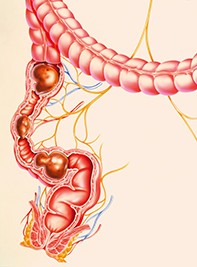Peer Reviewed
Gastroenterology clinic
Constipation in the elderly
Abstract
Constipation is a common problem in the elderly, negatively affecting patients’ social and professional lives. After ruling out secondary causes, the management of patients with chronic idiopathic constipation involves patient education, dietary changes, laxatives and enemas.
Key Points
- Constipation is a common problem in the elderly and has a variety of causes, including reduced fibre and fluid intake, reduced physical activity, pelvic floor dysfunction, medication side effects and multiple medical conditions. Constipation is variably defined and its diagnosis is often arbitrary. Physicians generally define it as there being fewer than three bowel motions per week. The Rome III criteria for diagnosis of functional constipation combines objective and subjective symptoms, as outlined in the box on page 58.
- Prevalence of constipation varies widely, ranging from 2% to 28%. In nursing homes, prevalence is as high as 50%, with 74% of residents using laxatives. A survey about constipation in Australian women found that 27% of women older than 70 years experience constipation.
- Constipation ranks among the five most common diagnoses by physicians for gastrointestinal disorders among outpatient clinic visits. In the USA, constipation results in 2.5 million physician visits, 92,000 hospitalisations and several hundred millions of dollars of laxatives sales each year.
Remember
Purchase the PDF version of this article
Already a subscriber? Login here.

